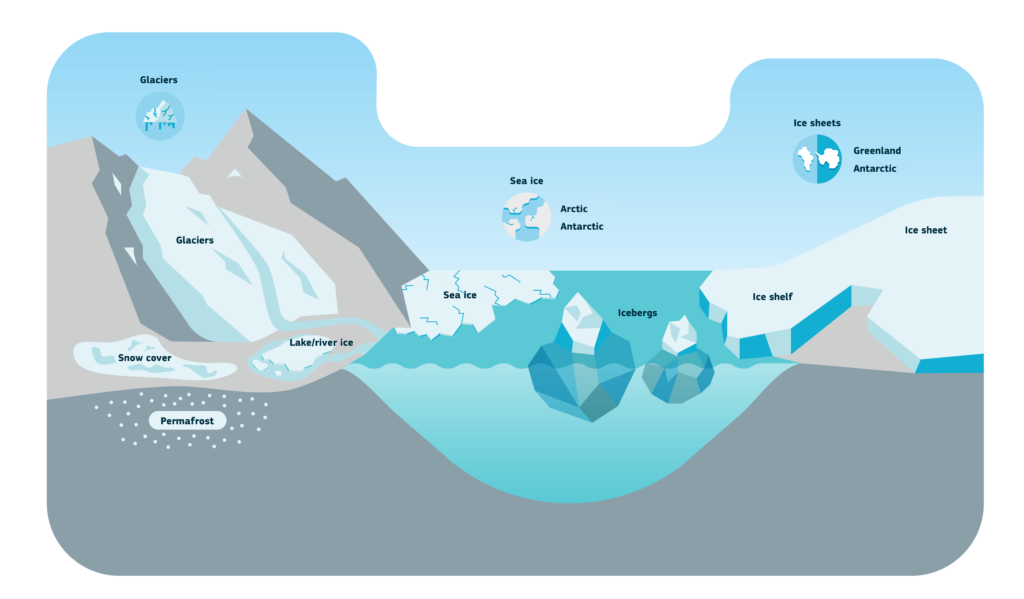
Earth’s cold regions drive important processes that control global water, heat, energy, and chemistry budgets. The continuing rapid changes in these regions are therefore affecting human activities at all latitudes through processes that remain incompletely understood.
Substantial uncertainties remain in the magnitude of cryospheric feedback mechanisms, impairing climate predictability. While weather and climate prediction models have improved significantly over the last decade, uncertainties in cryospheric processes consistently point to the need for more accurate observations of key parameters. Indeed, substantial gaps exist between the needs of model and users and current observational capabilities for multiple key parameters.
Observations from space are essential for more accurate description of the processes that dominate polar regions, but existing or planned space-borne sensors do not provide all the necessary geophysical parameters at the required spatial coverage and resolution, revisit time, and accuracy.
Processes that need particular attention are:
- the freshening of the Arctic Ocean (impacted by effects such as melting sea ice, increased continental runoff, and ocean circulation changes);
- variations in sea surface salinity in the Southern Ocean associated with the changes of Antarctic sea ice extent and thickness and their implications for oceanic circulation and for the ocean’s capability to absorb atmospheric heat and carbon; the progressive reduction in sea ice extent and thickness and its effects on Earth’s climate including environmental, economic and societal impacts;
- the acceleration of ice sheet mass loss and its effect on sea level rise; the collapse of Antarctic ice shelves, which affect the ocean stratification and bottom water formation.